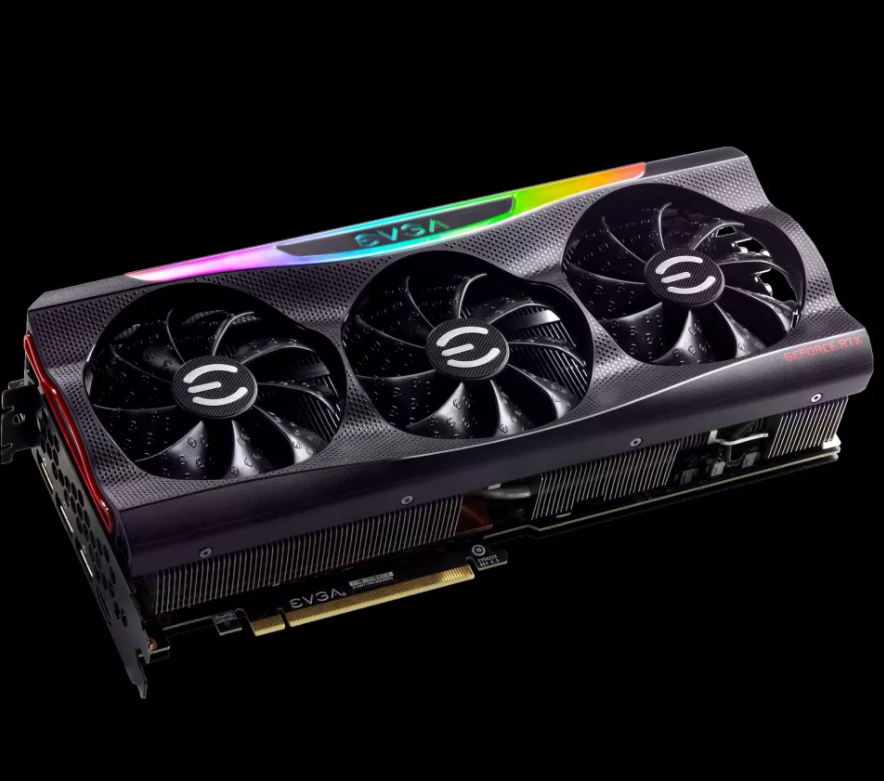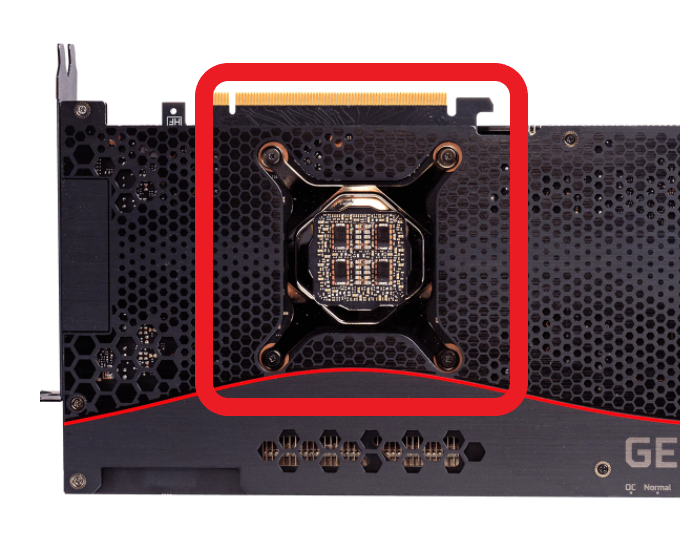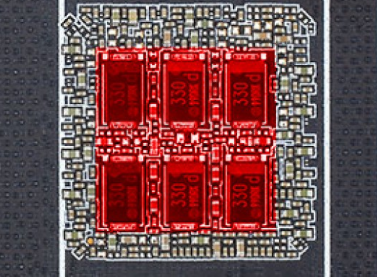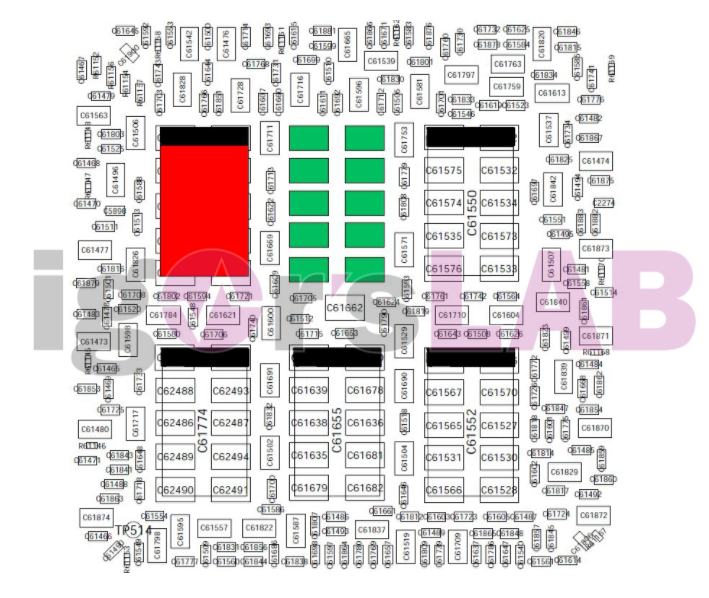EVGA Says Nvidia RTX 3080 Cap Issues Caused Crashes, Confirms Stability Issues
Capacitors seem to be a contributing factor to recent reports of crashes

EVGA has seemingly confirmed that issues with a certain type of capacitor could be a contributing factor to an increasing number of reports of crashes associated with factory-overclocked Nvidia GeForce RTX 3080 graphics cards.
These capacitors were cited in a recent article by Igor's Lab as the probable source of the issues that have spawned widespread complaints in enthusiast forums and Reddit about unexplained RTX 3080 crashes and black screens.
EVGA's statement, which comes in the form of a forum post, cites its own issues with the capacitors in its designs (we'll explain what this means below):
"[...]During our mass production QC testing we discovered a full 6 POSCAPs solution cannot pass the real world applications testing. It took almost a week of R&D effort to find the cause and reduce the POSCAPs to 4 and add 20 MLCC caps prior to shipping production boards, this is why the EVGA GeForce RTX 3080 FTW3 series was delayed at launch. There were no 6 POSCAP production EVGA GeForce RTX 3080 FTW3 boards shipped.
But, due to the time crunch, some of the reviewers were sent a pre-production version with 6 POSCAP’s, we are working with those reviewers directly to replace their boards with production versions. EVGA GeForce RTX 3080 XC3 series with 5 POSCAPs + 10 MLCC solution is matched with the XC3 spec without issues. [...]" [Emphasis Added]
What Does it all Mean?
Reports began circulating earlier this week that some of Nvidia's new RTX 3080 cards were crashing during gaming sessions, and the stability issues have largely been observed during times that certain third-party graphics cards reached or exceeded 2.0 GHz. Notably, that's the factory-overclocked range of most third-party RTX 3080's. Manually downclocking the impacted cards by ~100MHz has seemed to fix the RTX 3080 crashing issues, but this is based on anecdotal evidence.

Igor's Lab theorizes that the issues stem from the capacitors used on the rear of the PCB underneath the GPU die. The RTX 3080 cards on the market use two types of capacitors to filter voltages, one referred to as POSCAPS (Conductive Polymer Tantalum Solid Capacitors ) but said to be SP-Caps, and the other called MLCC (Multilayer Ceramic Chip Capacitor). Graphics cards makers design the Ampere graphics cards using either all POSCAPS, or a mixture of both POSCAPS and MLCC capacitors.

POSCAPS are colored red, MLCC are colored in green. The first slide shows a mixed POSCAP/MLCC design, while the second shows an all-POSCAP design. Pictures courtesy of Igor's Lab.


Both types of capacitors have their respective advantages, with MLCC caps being smaller, cheaper, and operate well at high frequencies - but they have temperature limitations and crack more often. Conversely, POSCAPS are more expensive, bigger, have a higher temperature rating, and don't crack as often, but aren't as good at higher frequencies.
Get Tom's Hardware's best news and in-depth reviews, straight to your inbox.
Nvidia's RTX 3080 FE cards don't use as many POSCAP capacitors, instead bundling them with MLCC capacitors - and those cards don't seem to suffer as much from the crashes and black-screening issues. In contrast, custom cards that use all-POSCAP implementations seem to suffer from the crashing issues more frequently.
EVGA's statement above acknowledges that its own cards weren't stable with the all-POSCAP solution, all but confirming that the capacitors could play a role in crashes. In fact, EVGA says its all-POSCAP designs couldn't pass its own internal testing, so the company went with a mixed POSCAP and MLCC design, which solved the issues, albeit at the cost of a delayed launch.
We do need to exercise caution, though. There's still the outside chance that this issue isn't entirely related to capacitors - Nvidia's Ampere cards have higher power supply requirements than previous-gen cards, and drivers are still in the early stages of widespread use. As such, capacitor-induced crashes might not be responsible for all crashing issues - there are a lot of factors at play.
Also, there is no guarantee that all cards with POSCAP-only designs are defective, instead, this could imply they simply have a greater chance of an issue (i.e., a slightly higher failure rate). Nvidia provides manufacturing recommendations to its AIB partners, and it is unlikely that it would have passed design rules to partners that would result in widespread failures.
For reference, there are lists of third-party (AIB) graphics cards (compiled by reddit /user/Roseking/) and their capacitor arrangements available online. Be sure to check the reddit post for further updates to the list.
In the meantime, be sure to head to Igor's article over at Igor's Lab for the deep-dive details about the capacitor issues. We reached out to Nvidia on the matter earlier this week, and the company has yet to acknowledge the crashing issues or provide a statement.

Paul Alcorn is the Editor-in-Chief for Tom's Hardware US. He also writes news and reviews on CPUs, storage, and enterprise hardware.
-
neojack thanks for the articleReply
can you please add a paragraph to explain what is a POPCAP, what is a MLCCs and why it is superior ?
also it could be important to identify the best PCB designs. more work for Bulzoid/Gamer nexus ! -
nofanneeded Replydrivinfast247 said:So only third party cards are having issues?
well , if used as is , the FE models wont crash because they stay below 2Ghz OC , but if water cooled and OCed to higher levels , it is still not clear.Nvidia's own RTX 3080 FE models, which only reach 1.71 GHz, aren't impacted by the crashes.
-
nofanneeded Tomshardware , Why are you using the RTX 3080 FE photo and not EVGA cards Pics ?? this is wrong.Reply -
spongiemaster Reply
Here is a good video explaining the issue:neojack said:thanks for the article
can you please add a paragraph to explain what is a POPCAP, what is a MLCCs and why it is superior ?
also it could be important to identify the best PCB designs. more work for Bulzoid/Gamer nexus !
x6bUUEEe-X8View: https://www.youtube.com/watch?v=x6bUUEEe-X8 -
InvalidError Reply
PoSCap are solid polymer caps.neojack said:can you please add a paragraph to explain what is a POPCAP, what is a MLCCs and why it is superior ?
They are neither superior nor inferior, they just cover a different range (DC-10MHz) of the power supply filtering spectrum.
Different size capacitors are most effective across different ranges of the spectrum due to their packaging's intrinsic ESL. Once you pass a given capacitor's self-resonance frequency, it becomes more of an inductor than capacitor and stops contributing to supply filtering, which is why you see clusters of 3-5 different size caps to provide uniform coverage where smaller caps pick up at frequencies where the large caps become less effective.
The POSCAPs likely had too much total ESL to maintain sufficiently flat filtering until the next cap size down could pick up, so the GPU voltage got too noisy for stable operation beyond 2GHz on cards with no intermediate-size MLCCs between the POSCAPs and the rest.
Beginners' mistake as far as high speed circuit design is concerned. -
spongiemaster Reply
This is a much better technical explanation of the issue. The video I posted is more of a pop-up book with pretty pictures version of the explanation.InvalidError said:PoSCap are solid polymer caps.
They are neither superior nor inferior, they just cover a different range (DC-10MHz) of the power supply filtering spectrum.
Different size capacitors are most effective across different ranges of the spectrum due to their packaging's intrinsic ESL. Once you pass a given capacitor's self-resonance frequency, it becomes more of an inductor than capacitor and stops contributing to supply filtering, which is why you see clusters of 3-5 different size caps to provide uniform coverage where smaller caps pick up at frequencies where the large caps become less effective.
The POSCAPs likely had too much total ESL to maintain sufficiently flat filtering until the next cap size down could pick up, so the GPU voltage got too noisy for stable operation beyond 2GHz on cards with no intermediate-size MLCCs between the POSCAPs and the rest.
Beginners' mistake as far as high speed circuit design is concerned. -
Paul Alcorn Replynofanneeded said:Tomshardware , Why are you using the RTX 3080 FE photo and not EVGA cards Pics ?? this is wrong.
Fair observation - I was in a bit of a rush to get the article done, and honestly didn't think of it. Updated.